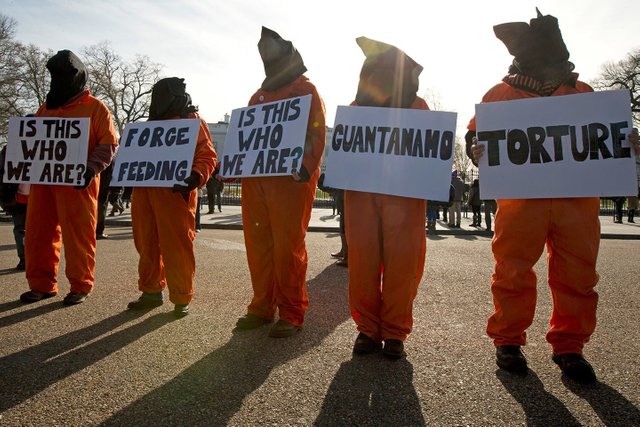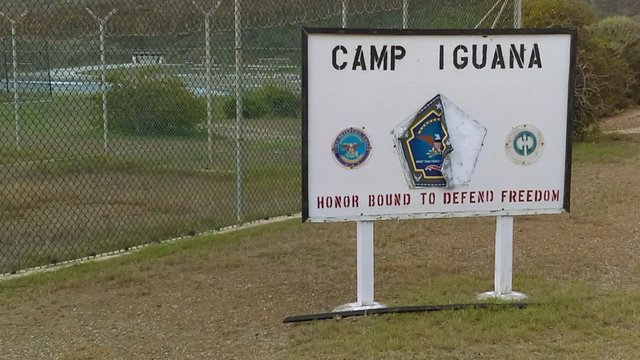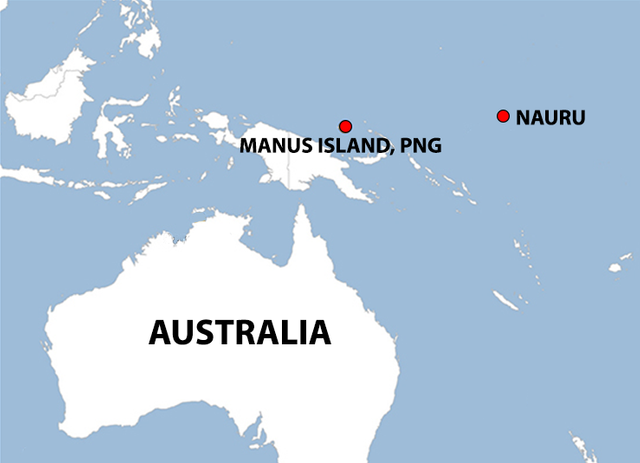Guantanamo Bay exists for 18 years now: a laboratory for the prison of modern times

Why am I writing this piece? Not because I think an opinion article will change anything, but to remind everyone that Guantanamo still exists in 2020. To disturb our indifference to the unacceptable. To make sure that we can't keep ignoring this colonial penal colony and symbol of modern fascism. To make sure we are not able to say: we didn't know. And to say that Guantanamo Syndrome is spreading further and further around the world.

A colonial creation
On January 11, 2002, an American military base in Cuba was transformed into the most controversial prison in the world. The Guantanamo Bay prison was deliberately implanted in an American colonial zone outside of American territory. With the intention of showing the whole world that it was a prison that fell outside of every legal order and outside of all international and national humanitarian agreements. Like at the time of the French and British penal colonies, Bush and co chose an island because the water around it makes it impossible to escape. Moreover, any external monitoring of what is happening on that island is extremely difficult.
From 2002, 779 people suspected of terrorism were detained, arrested in the context of the Global War on Terrorism(GWT), launched by the United States after the September 11 attacks.
The vast majority of these 779 prisoners were suspected of belonging to Al Qaeda or the Taliban. In many cases, they were literally bought by the Americans in Afghanistan and Pakistan, paying an average price of $ 5,000 per person to anyone who could deliver an alleged terrorist to the US occupation forces and the CIA.
The collective humiliation of these prisoners in Guantanamo, blindfolded, obliged to wear a diaper, chained, on their knees, in a steel cage surrounded by dogs and American soldiers, had to serve as an ultimate demonstration for the victory of the West in the Global War on Terror. In her book "Dispatches from the Dark Side", British lawyer Gareth Peirce compared the transport of Guantanamo prisoners with the slave transport of 400 years ago.
Gareth Peirce Speaks on Bradley Manning: Dispatches from the Dark Side, originally from Daily Motion.
The comparison doesn't stop with transport only
John Yoo was the man in the US Department of Justice, who wrote the Torture memos for the Bush government, the redefinition of what had been considered torture since the end of World War II. His so-called "Enhanced interrogation techniques" gave the green light 18 years ago for the legal torture of prisoners in Guantanamo, Abu Ghraib prison, Parwan Detention Facility and other black sites of the CIA, by torturers who, just as legally, were guaranteed impunity.
For the prisoners a new statute was devised, that of "enemy combatant", which meant that they could not be regarded as prisoners of war nor as criminals of common law. The prisoners could not appeal to the habeas corpus - the right to appear in court and demand that the authorities account for their detention. Their detention fell outside the international and national laws. If they already had a trial, it was not allowed to go to a federal court, but to a military commission.
The Americans have not had to invent anything. In her book Time in the Shadows, Laleh Khalili states that John Yoo got his inspiration from colonial history.
In his memos, she writes, John Yoo explicitly referred to US suppression of Native Americans and the insurgents of the Boxer Rebellion. In another memo that legally circumscribes the application of Geneva Conventions to Taliban and Al-Qaeda operatives, John Yoo refers to the examples of French and British suspensions in their counterinsurgencies in Algeria and Kenya, respectively. Or he refers to how Israel denied Palestinian prisoners the right to visit the Red Cross during the 1967 war.
The most striking characteristic of the legal edifice around counterinsurgency incarcerations is the perpetual return of the repressed, of the histories of colonialism and domination being read into the present through precedents, even when those precedents are invoked by liberal judges in the cause of granting the detainees rights the government wants denied.
It was that colonial cocktail that created the torture camp of Guantanamo.

A laboratory for the prison of modern times
In addition to a colonial creation, Guantanamo has also become a modern laboratory for the most extreme forms of detention.
Out of a total of around eight hundred detainees, there are still 40 prisoners in Guantanamo Bay today. The others are, usually after years of imprisonment, without any accusation and without trial, released, extradited to their country of origin or placed in third countries.
Since Trump came to power, any release from Guantanamo has been banned. For the past three years, exactly one prisoner, a man from Saudi Arabia, has been sent to his home country to be further detained there, and only after he concluded a "plea deal" with the US military commission in May 2014. To this day, Trump has no intention whatsoever to release anyone else.

Obama's administration had decided that five of the forty prisoners should be released immediately. But the five are still there. Twenty-six of the forty prisoners have never been charged with anything after 18 years in detention. Their perspective is that they will be imprisoned without charge, without trial, until their death.
Since Guantánamo opened, it’s been clear to all – including U.S. officials – that the detainees were being held on the basis of mistakes, faulty evidence, and forced ‘confessions’. The US has had 16 years to build a case against these men, and yet 28 of 41 prisoners are held without charge or a trial of any kind – a shocking violation of America’s founding principles. - Reprieve attorney Shelby Sullivan-Bennis – who represents several prisoners at Guantánamo.
The above is a statement by Shelby Sullivan-Bennis, the lawyer of the Reprieve organization for six of these prisoners. In order to make it impossible to get a conviction for this violation against the US Constitution and international justice, the Trump administration stated that the detention of the Guantanamo prisoners is not "unlimited" but "indefinite"...
On January 30, 2018, in his first State of the Union, Trump announced that he would keep open the detention facilities at Guantanamo Bay. He added that he expected that “in many cases” captured terrorists would be sent to the camp.
Since then, the way has been cleared for the modernization of Guantanamo. Both to be able to care for the sick and old prisoners and to be able to take care of any newcomers. In an article for the Miami Herald, journalist Carol Rosenberg wrote:
the U.S. military's mission at Guantánamo is shifting to permanent detention for al-Qaida and other war-on-terror detainees. Two wings would have wheelchair-accessible cells and communal space, which they currently do not. A third wing would be for hospice care, a first for overall prison operations begun Jan. 11, 2002.
Many of Camp 7's captives, according to their lawyers, suffer a series of disabilities from their years in the CIA black sites where agents waterboarded some, rectally abused others and subjected them to cruel interrogation techniques such as hanging them by their wrists in shackles, confining them to cramped coffin-style boxes and keeping them naked in icy cold or overheated cells.

The islands of Manus and Nauru, the Australian Guantanamo
A thousand little Guantanamos
As long as Guantanamo exists, the model will spread like an oil slick. Both as a model for locking up detainees who are considered dangerous and for dealing with refugees. There is the Belmarsh prison in London, which is called the British Guantanamo. There was the AIBV in the Bruges prison, which was called a Belgian Guantanamo. There also was Georges Fenech, the French MP who led a parliamentary inquiry into the November terror attacks in Paris in 2015 - who suggested a French Guantanamo should be opened on the island of Réh.
"A thousand little Guantanamos" is the title of a book by Matthew J. Gibney of Oxford University, which describes the measures taken by Western countries against refugees. Such as the island of Nauru, the Australian Guantanamo, which is used to detain refugees. Or the Lindholm Island, the Danish Guantanamo, which for several decades served as a research center for infectious diseases and which now wants to be used by Denmark to lock up "criminal and unwanted" refugees.

Sources not mentioned in the text:
- Guantánamo lawyers file mass challenge to Trump’s Gitmo policy
- Editorial: Guantanamo detainees are still trapped in a legal black hole
- Donald Trump signs executive order to keep Guantánamo Bay open
- Gitmo commanders make pitch for new prison with hospice-care wing for ex-CIA captives
- Idyllic French island 'should become a new Guantanamo' with a prison to house thousands of jihadists returning from Iraq and Syria
Here you can download "A thousand little Guantanamos" by Matthew J. Gibney